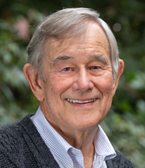President Barack Obama last month signed an executive order promising to "improve outcomes and advance educational opportunities for African Americans." The order instructs federal agencies to "promote, encourage, and undertake efforts" to increase "college access, college persistence and college attainment for African American students." Unfortunately, his administration remains opposed to the Opportunity Scholarship program in Washington, D.C., which lets students—mostly low-income and African-American—use a voucher to attend a private school.
Perhaps Mr. Obama will reconsider his position on vouchers now that we have for the first time tracked the impact of a voucher program all the way from kindergarten (in 1997) to college enrollment (in 2011). Our study compared students who won a voucher lottery with students who didn't—the only difference between the groups was the luck of the draw, the gold standard in research design.
The study shows that an African-American student who was able to use a voucher to attend a private school was 24% more likely to enroll in college than an African-American student who didn't win a voucher lottery.
The voucher program took place in New York City. Its impetus came in 1996, when Archbishop John J. O'Connor invited New York City schools Chancellor Rudy Crew to "send the city's most troubled public school students to Catholic schools." When Mayor Rudolph Giuliani attempted to fund the initiative out of city funds, he encountered strong opposition from those who saw it as a violation of the First Amendment's establishment clause (an argument subsequently rejected by the Supreme Court in other cases). As the controversy raged, a group of private philanthropists—including prominent Wall Street figures Bruce Kovner, Roger Hertog and Peter Flanagan—created the New York School Choice Scholarships Foundation.
The foundation offered three-year scholarships—that is, vouchers—worth up to $1,400 annually (in 1998 dollars) to approximately 1,000 low-income families with children of elementary-school age. A recipient could attend any of the hundreds of private schools, religious or secular, in New York City. The city's largest provider of private schooling was the Catholic archdiocese, which reported average tuition at the time of $1,728 per year. Total expenditures at these schools, from all revenue sources, came to $2,400 per pupil (compared to total costs of more than $5,000 per pupil in the public schools). Over 20,000 applicants participated in the lottery.
Of the 2,666 students in the original study, necessary information was available for over 99%. To see whether those who won the lottery were more likely to go to college, we linked student Social Security numbers and other identifying characteristics to college enrollment data available from the National Student Clearinghouse, which collects that information from institutions of higher education attended by 96% of all U.S. students. We know of no other voucher study that has been as successful at tracking students over such a long period of time.
Although our study identified no significant impact on college enrollments among Hispanic students (and too few white and Asian students participated for us to analyze), the impact on African-American students was large. Not only were part-time and full-time college enrollment together up 24%, but full-time enrollment increased 31% and attendance at selective colleges (enrolling students with average SAT scores of 1100 or higher) more than doubled, to 8% from 3%.
These impacts are especially striking given the modest costs of the intervention: only $4,200 per pupil over a three-year period. This implies that the government would actually save money if it introduced a similar voucher program, as private-school costs are lower than public-school costs. To get a similar (19%) increase in college enrollment among African-Americans from a class-size reduction effort in Tennessee in the late 1980s, the public-school system had to spend $9,400 per pupil (in 1998 dollars).
The difference in the effects for African-American and Hispanic students is probably due to the greater educational challenges faced by the African-Americans. Only 36% of them went to college if they didn't receive a voucher, compared to 45% of the Hispanic students.
President Obama is certainly correct to identify the particularly steep educational barriers that African-American students must surmount if they are to become college-ready. And he seems to have nothing against private school per se, as he has long sent his own daughters to private schools. Yet—apparently thanks to opposition to vouchers from powerful teachers unions—the president still hasn't taken the next step and helped open private-school doors for low-income children as well.
"I have an 8-year-old in third grade, and she's doing great. It's miraculous the way she has changed," said a voucher-winning African-American mother at a focus group session in 1999. The cause of the change was clear. It came from the power of parental choice in education. It wasn't "miraculous"—unless you happen to be one of the parents directly involved.
